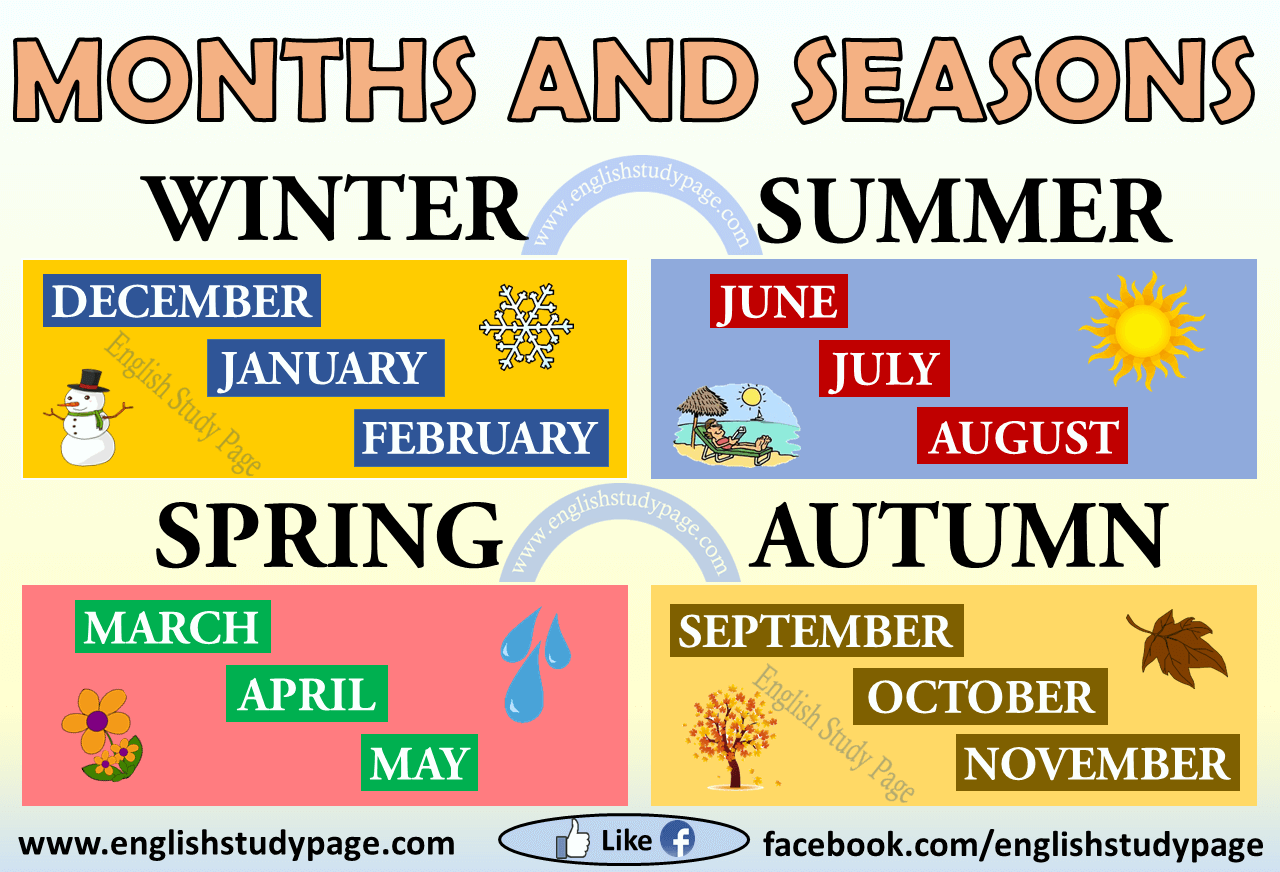Hello, students!
We learned months and seasons. I'd like you to read this post and memorize all the new words.
Irena
There are 12 months in a year.
They are January, February, March, April, May, June, July, August, September, October, November and December.
January is the first month of the year.
The first month of the year is January.
January comes after December.
It comes before February.
This month begins the year.
February is the second month of the year.
The second month of the year is February.
February comes after January.
It comes before March.
March is the third month of the year.
The third month of the year is March.
March comes after February.
It comes before April.
April is the fourth month of the year.
The fourth month of the year is April.
April comes after March.
It comes before May.
May is the fifth month of the year.
The fifth month of the year is May.
May comes after April.
It comes before June.
June is the sixth month of the year.
The sixth month of the year is June.
June comes after May.
It comes before July.
July is the seventh month of the year.
The seventh month of the year is July.
July comes after June.
August is the eighth month of the year.
The eighth month of the year is August.
August comes after July.
September is the ninth month of the year.
The ninth month of the year is September.
September comes after August.
October is the tenth month of the year.
The tenth month of the year is October.
October comes after September.
November is the eleventh month of the year.
The eleventh month of the year is November.
November comes after October.
It comes before December.
December is the twelfth month of the year.
The twelfth month of the year is December.
The last month of the year is December.
December comes after November.
It comes before January.
Seasons
There are 4 seasons in a year:
Winter
Spring
Summer
Fall
So, here are seasons and months of these seasons:
Now Practice with your classmates - ask each other these question:
What month is it?
What season is it?
What's your favorite month?
What's your favorite season?
What month is your birthday in?
What season is your birthday in?
Have fun!






















